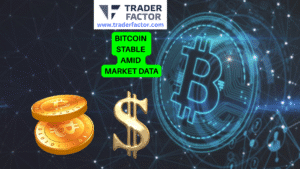The Australian Dollar (AUD) has been facing some headwinds due to the recent Federal Open Market Committee (FOMC) minutes, which reflected a modestly hawkish tone. The minutes unveiled that FOMC members agreed on maintaining a restrictive monetary policy until there was clear and sustainable progress towards lowering inflation towards the committee’s target.
AUDUSD Daily Chart

However, the AUD found some support following the release of the Reserve Bank of Australia (RBA) minutes, which also carried a hawkish tilt. The RBA Governor, Michele Bullock, expressed optimism about Australia’s labor market and predicted the positive job trend would continue. However, she raised concerns about the inflation challenge over the next couple of years, attributing it to underlying demand issues rather than just supply problems.
US Dollar Strength and Its Impact on AUD
In the wake of the FOMC meeting, the AUD saw an extended period of losses after pulling back from a three-month high. This was prompted by a corrective move by the US Dollar (USD), which recovered strength after the release of the FOMC minutes.
Rising US Treasury Rates and DXY
On the other side of the Pacific, the US Dollar Index (DXY) continued its upward trajectory as US Treasury rates rose. Investors are now awaiting key data from the US, including weekly jobless claims and the University of Michigan Consumer Sentiment survey.
Australian Economic Indicators and RBA Minutes
Meanwhile, in Australia, the Westpac Leading Index for October showed a contraction of 0.03%, compared to a rise of 0.07% in the previous month. The RBA minutes revealed a discussion around the potential of rate hikes to combat inflation risks, emphasizing the importance of preventing a rise in inflation expectations. The board’s forecasts assumed one or two more rate increases, and rising house prices indicated that policy might not be overly restrictive.
Chinese Monetary Policy and Real Estate Support
In China, the People’s Bank of China (PBoC) maintained its loan prime rate at 3.45%. Chinese authorities are expected to provide support to the real estate sector by drafting a list of 50 eligible developers, both private and state-owned, to guide financial institutions in providing support through various means such as bank loans, debt, and equity financing.
US Housing Market Trend
Finally, in the US, Existing Home Sales Change for October showed a decline of 4.1%, compared to a fall of 2.2% in the previous month, indicating a slowdown in the housing market.
Lagarde’s Influence on the EUR/USD Exchange Rate
The Euro to US Dollar (EUR/USD) exchange rate has gained some strength following comments from European Central Bank (ECB) President Christine Lagarde. In a recent statement, Lagarde cautioned against prematurely declaring victory over inflation, which in turn provided support to the EUR/USD pair.
Overnight Trading and Technical Indicators
In the midst of these developments, technical indicators are suggesting an upward trend for the EUR/USD pair. The pair’s performance during the Asian trading session on Wednesday saw a slight recovery from previous losses, with trade hovering around the 1.0910 mark.
Lagarde’s Warning on Inflation
Lagarde’s remarks were made at an event in Berlin, where she emphasized the need for continued vigilance in addressing inflation. She warned against making assumptions based on short-term data flow, stating that it was too soon to claim success over inflation.
Market Sentiment and Technical Indicators
These statements have had a noticeable impact on the market’s sentiment towards the EUR/USD pair. The 14-day Relative Strength Index (RSI), which currently sits above 50, indicates a bullish sentiment and suggests that momentum is building for the pair.
Moreover, the Moving Average Convergence Divergence (MACD) line is also trending above the centerline. With the divergence being above the signal line, there are indications that the EUR/USD pair could make another attempt to breach the 1.1000 psychological level, following a high of 1.1064 in August.
Potential Hurdles for the EUR/USD Pair
However, the pair is not without its potential hurdles. The immediate support level is found at 1.0900, backed up by the seven-day Exponential Moving Average (EMA) at 1.0874. Should there be a significant break below this level, the EUR/USD pair could face pressure to navigate towards the 23.6% Fibonacci retracement at 1.0841.
Disclaimer:
All information has been prepared by TraderFactor or partners. The information does not contain a record of TraderFactor or partner’s prices or an offer of or solicitation for a transaction in any financial instrument. No representation or warranty is given as to the accuracy or completeness of this information. Any material provided does not have regard to the specific investment objective and financial situation of any person who may read it. Past performance is not a reliable indicator of future performance.

















